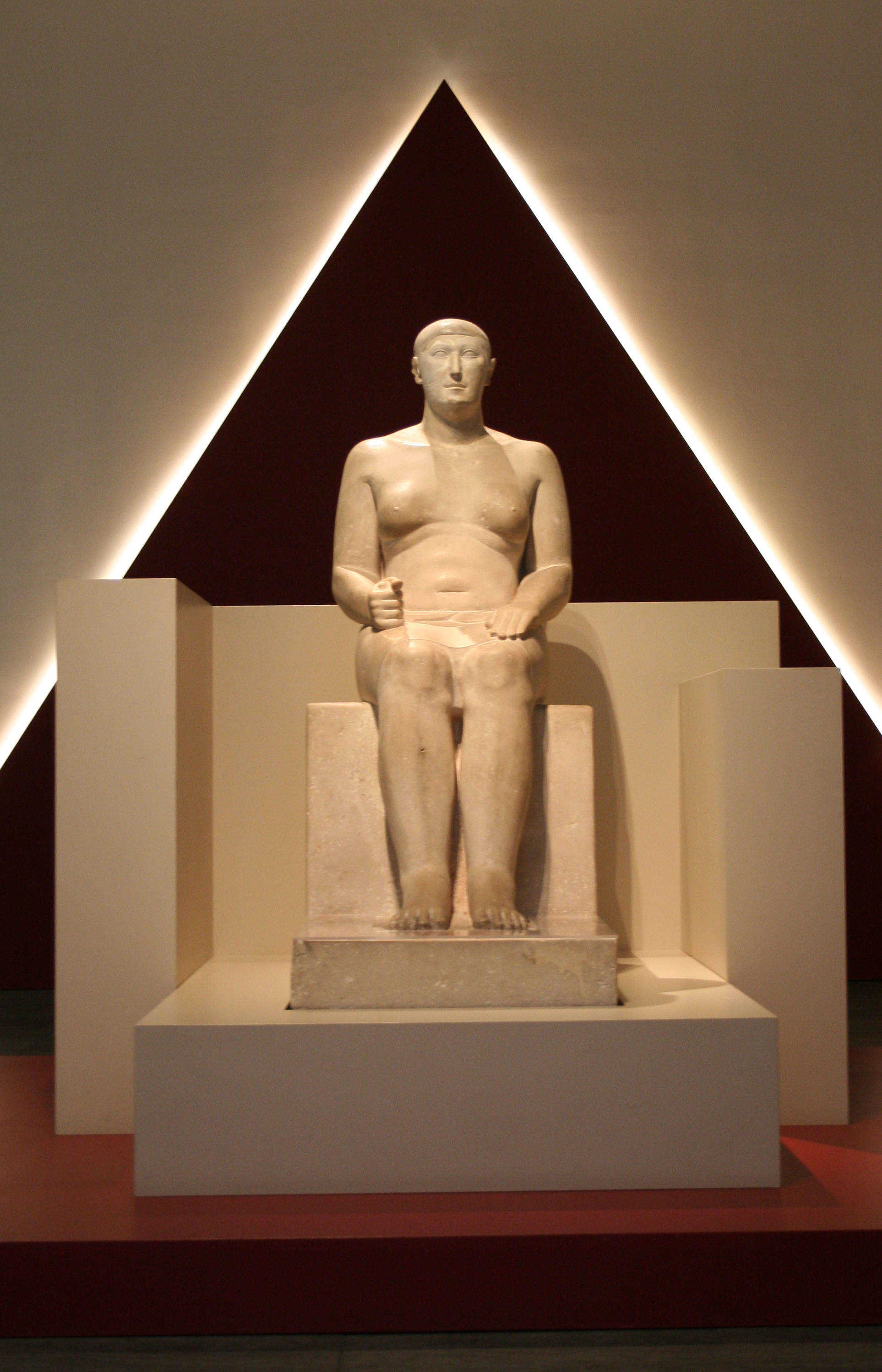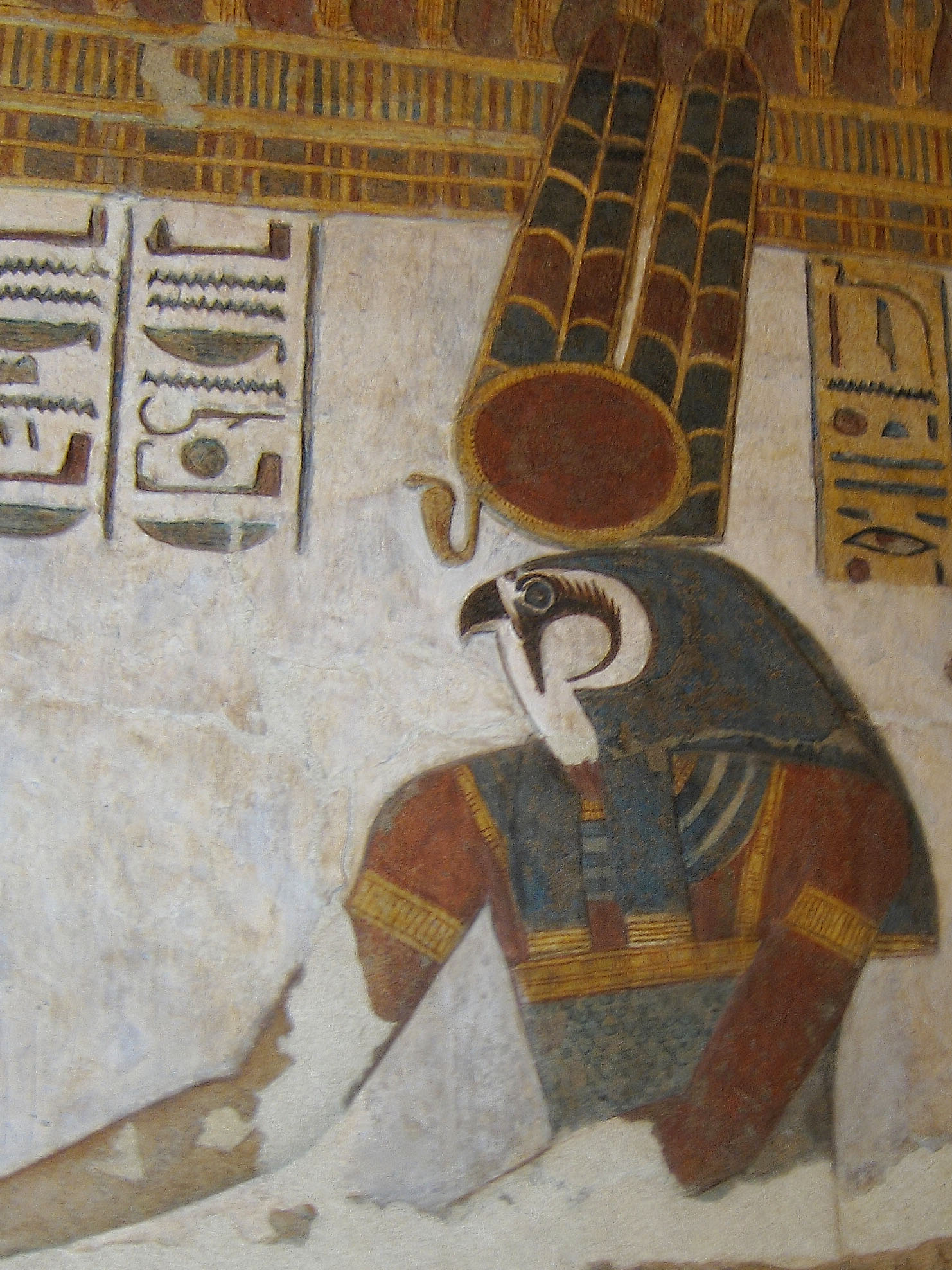|
Usermontu (vizier)
Usermontu was an ancient Egyptian vizier from the reign of Tutankhamun to likely the reign of Horemheb, during the 18th Dynasty. Usermontu is depicted in the tomb of Khonsu called To ( TT31). In the hall Usermontu and his brother Huy, who was a prophet of Montu are shown offering to the barque of Montu. Usermontu is said to be born of Maia. A statue from a private collection gives the name of his father as Nebmehyt. A second individual by the name of Usermontu is mentioned in the tomb, but this individual is the son of Khonsu. This younger Usermontu is a High Priest of Sobek. The vizier Usermontu is also depicted in the tomb of the High Priest of Sobek, Hatiay (TT324). Usermontu is shown seated at a banquet with vizier Nebamun(?). A stele of Usermontu was found in Armant Armant ( ar, أرْمَنْت; egy, jwn.w-n-mnṯ.w or ''jwn.w-šmꜥ.w''; Bohairic: ; Sahidic: ), also known as Hermonthis ( grc, Ἕρμωνθις), is a town located about south of Thebes. It was an ... [...More Info...] [...Related Items...] OR: [Wikipedia] [Google] [Baidu] |
Tutankhamun
Tutankhamun (, egy, twt-ꜥnḫ-jmn), Egyptological pronunciation Tutankhamen () (), sometimes referred to as King Tut, was an Egyptian pharaoh who was the last of his royal family to rule during the end of the Eighteenth Dynasty (ruled in the conventional chronology) during the New Kingdom of Egyptian history. His father is believed to be the pharaoh Akhenaten, identified as the mummy found in the tomb KV55. His mother is his father's sister, identified through DNA testing as an unknown mummy referred to as "The Younger Lady" who was found in KV35. Tutankhamun took the throne at eight or nine years of age under the unprecedented viziership of his eventual successor, Ay, to whom he may have been related. He married his paternal half-sister Ankhesenamun. During their marriage they lost two daughters, one at 5–6 months of pregnancy and the other shortly after birth at full-term. His names—''Tutankhaten'' and ''Tutankhamun''—are thought to mean "Living image of At ... [...More Info...] [...Related Items...] OR: [Wikipedia] [Google] [Baidu] |
Horemheb
Horemheb, also spelled Horemhab or Haremhab ( egy, ḥr-m-ḥb, meaning "Horus is in Jubilation") was the last pharaoh of the Eighteenth dynasty of Egypt, 18th Dynasty of Egypt (1550–1295 BC). He ruled for at least 14 years between 1319 BC and 1292 BC. He had no relation to the preceding royal family other than by marriage to Mutnedjmet, who is thought (though disputed) to have been the daughter of his predecessor Ay (pharaoh), Ay; he is believed to have been of common birth. Before he became pharaoh, Horemheb was the commander in chief of the army under the reigns of Tutankhamun and Ay (pharaoh), Ay. After his accession to the throne, he reformed the Egyptian state and it was under his reign that official action against the preceding Amarna Period, Amarna rulers began. Due to this, he is considered the ruler who restabilized his country after the troublesome and divisive Amarna Period. Horemheb demolished monuments of Akhenaten, reusing the rubble in his own ... [...More Info...] [...Related Items...] OR: [Wikipedia] [Google] [Baidu] |
Vizier (Ancient Egypt)
The vizier () was the highest official in ancient Egypt to serve the pharaoh (king) during the Old, Middle, and New Kingdoms. Vizier is the generally accepted rendering of ancient Egyptian , etc., among Egyptologists. The ''Instruction of Rekhmire'' (''Installation of the Vizier''), a New Kingdom text, defines many of the duties of the , and lays down codes of behavior. The viziers were often appointed by the pharaoh. During the 4th Dynasty and early 5th Dynasty, viziers were exclusively drawn from the royal family; from the period around the reign of Neferirkare Kakai onwards, they were chosen according to loyalty and talent or inherited the position from their fathers. Responsibilities The viziers were appointed by the pharaohs and often belonged to a pharaoh's family. The vizier's paramount duty was to supervise the running of the country, much like a prime minister. At times this included small details such as sampling the city's water supply. All other lesser supervis ... [...More Info...] [...Related Items...] OR: [Wikipedia] [Google] [Baidu] |
Khonsu (TT31)
Khonsu called To who was First Prophet of Menkheperre ( Thutmose III), during the reign of Ramesses II in the 19th Dynasty Family Khonsu was the son of the High Priest of Amenhotep II Neferhotep and Tawosret. Khonsu had several brothers and sisters including the High Priests of Thutmosis I Nay and Iuy.Kitchen, Kenneth A. ''Ramesside Inscriptions, Translated and Annotated Translations: Ramesses II, His Contemporaries (Ramesside Inscriptions Translations) (Volume III)'' Wiley-Blackwell. 2001, pp 289-297, Khonsu is attested with two wives in his tomb TT31. His first wife Ruia was the mother of the High Priest of Sobek Usermontu and other children. His second wife May was mother to the Stablemaster Usermontu and the Second Prophet of Menkheperre Khaemwaset and others. Career Khonsu served as High Priest of Menkheperre ( Thutmose III) and is depicted in his tomb overseeing the transport of a statue of the King. Depictions show a pylon at the Temple of Mencheperre at Armant. Khons ... [...More Info...] [...Related Items...] OR: [Wikipedia] [Google] [Baidu] |
TT31
The Theban Tomb TT31 is located in Sheikh Abd el-Qurna, part of the Theban Necropolis, on the west bank of the Nile, opposite to Luxor. It is the burial place of the ancient Egyptian official, Khonsu, who was First Prophet of Menkheperre (Thutmose III), during the 19th Dynasty or 20th Dynasty. Facade and entrance doorway Khonsu is depicted and is being served by Usermontu, who is a God's father, Lector of Ptah and a Deputy in the King's Temple on the West of Thebes. In the entrance doorway Khons is identified as the High Priest of the Lord of the Two Lands Menkheperre (Thutmosis III). His mother is said to be Tawosret, a chantress of Montu. The inscriptions further identify his son the stablemaster Usermontu, his wife (?) the Chantress of Amun named May, his son the Second Prophet of Menkheperre named Khaemwaset, and a daughter named Iuy.Kitchen, Kenneth A. Ramesside Inscriptions, Translated and Annotated Translations: Ramesses II, His Contemporaries (Ramesside Inscriptions Tran ... [...More Info...] [...Related Items...] OR: [Wikipedia] [Google] [Baidu] |
Montu
Montu was a falcon-god of war in ancient Egyptian religion, an embodiment of the conquering vitality of the pharaoh.Hart, George, ''A Dictionary of Egyptian Gods and Goddesses'', Routledge, 1986, . p. 126. He was particularly worshipped in Upper Egypt and in the district of Thebes.Rachet, Guy (1994). ''Dizionario della civiltà egizia''. Rome: Gremese Editore. . p. 208. Name Montu's name, shown in Egyptian hieroglyphs to the right, is technically transcribed as ''mntw'' (meaning "Nomad"). Because of the difficulty in transcribing Egyptian vowels, it is often realized as Mont, Monthu, Montju, Ment or Menthu. Role and characteristics A very ancient god, Montu was originally a manifestation of the scorching effect of Ra, the sun – and as such often appeared under the epithet Montu-Ra. The destructiveness of this characteristic led to him gaining characteristics of a warrior, and eventually becoming a widely revered war-god. The Egyptians thought that Montu would attack th ... [...More Info...] [...Related Items...] OR: [Wikipedia] [Google] [Baidu] |
Sobek
Sobek (also called Sebek or Sobki, cop, Ⲥⲟⲩⲕ, Souk) was an ancient Egyptian deity with a complex and elastic history and nature. He is associated with the Nile crocodile or the West African crocodile and is represented either in its form or as a human with a crocodile head. Sobek was also associated with pharaonic power, fertility, and military prowess, but served additionally as a protective deity with apotropaic qualities, invoked especially for protection against the dangers presented by the Nile. Sobek has been famed for having been revered by the first female Pharaoh by the Nebty name Sat-Sekhem-Nebet-Tawy Sobekneferu, present both in the female Pharaoh's nomen, Sobek'Neferu (sbk-nfrw - Beauty of Sobek), and her praenomen Ka'Sobek'Re (The Ka of Sobek-Ra). History Sobek enjoyed a longstanding presence in the ancient Egyptian pantheon, from the Old Kingdom of Egypt (c. 2686–2181 BCE) through the Roman period (). He is first known from several different Pyramid ... [...More Info...] [...Related Items...] OR: [Wikipedia] [Google] [Baidu] |
Nebamun (Vizier)
Nebamun was a Vizier of Ancient Egypt. He served from about the reign of Horemheb to the reign of Ramesses II. Nebamun is attested in the Memphite palace accounts early in Sethi I's reign. His tomb is not yet known, but was most likely in Saqqara. Nebamun is depicted together with the vizier Usermontu in the Theban Tomb TT 324, showing that they were in office in about the same time. His main monument is a limestone statue found at Abydos, now in the Cairo Museum, providing a long list of titles. He was connected via family ties to the High Priest of Osiris The High Priest of Osiris Osiris (, from Egyptian ''wsjr'', cop, ⲟⲩⲥⲓⲣⲉ , ; Phoenician: 𐤀𐤎𐤓, romanized: ʾsr) is the god of fertility, agriculture, the afterlife, the dead, resurrection, life, and vegetation in ancien ..., Wenennefer.K.Kitchen: ''Ramesside Inscriptions'', III, 449.11-450.16 References Viziers of the Eighteenth Dynasty of Egypt Viziers of the Nineteenth Dynasty of Egypt ... [...More Info...] [...Related Items...] OR: [Wikipedia] [Google] [Baidu] |
Stele
A stele ( ),Anglicized plural steles ( ); Greek plural stelai ( ), from Greek , ''stēlē''. The Greek plural is written , ''stēlai'', but this is only rarely encountered in English. or occasionally stela (plural ''stelas'' or ''stelæ''), when derived from Latin, is a stone or wooden slab, generally taller than it is wide, erected in the ancient world as a monument. The surface of the stele often has text, ornamentation, or both. These may be inscribed, carved in relief, or painted. Stelae were created for many reasons. Grave stelae were used for funerary or commemorative purposes. Stelae as slabs of stone would also be used as ancient Greek and Roman government notices or as boundary markers to mark borders or property lines. Stelae were occasionally erected as memorials to battles. For example, along with other memorials, there are more than half-a-dozen steles erected on the battlefield of Waterloo at the locations of notable actions by participants in battle. A traditio ... [...More Info...] [...Related Items...] OR: [Wikipedia] [Google] [Baidu] |
Armant
Armant ( ar, أرْمَنْت; egy, jwn.w-n-mnṯ.w or ''jwn.w-šmꜥ.w''; Bohairic: ; Sahidic: ), also known as Hermonthis ( grc, Ἕρμωνθις), is a town located about south of Thebes. It was an important Middle Kingdom town, which was enlarged during the Eighteenth Dynasty. It is located today in the Luxor Governorate on the west bank of the Nile. The ruined Temple of Hermonthis (sometimes Temple of Monthu) sits in the middle of the modern town. History The Ancient Egyptian name for the city meant "the Heliopolis of Montu", an Egyptian god whose root of name means "nomad". Montu was associated with raging bulls, strength and war. He was also said to manifest himself in a white bull with a black face, which was referred to as the Bakha. Egypt's greatest general-kings called themselves Mighty Bulls, the sons of Montu. In the famous narrative of the Battle of Kadesh, Ramesses II was said to have seen the enemy and "raged at them like Montu, Lord of Thebes". A tem ... [...More Info...] [...Related Items...] OR: [Wikipedia] [Google] [Baidu] |



